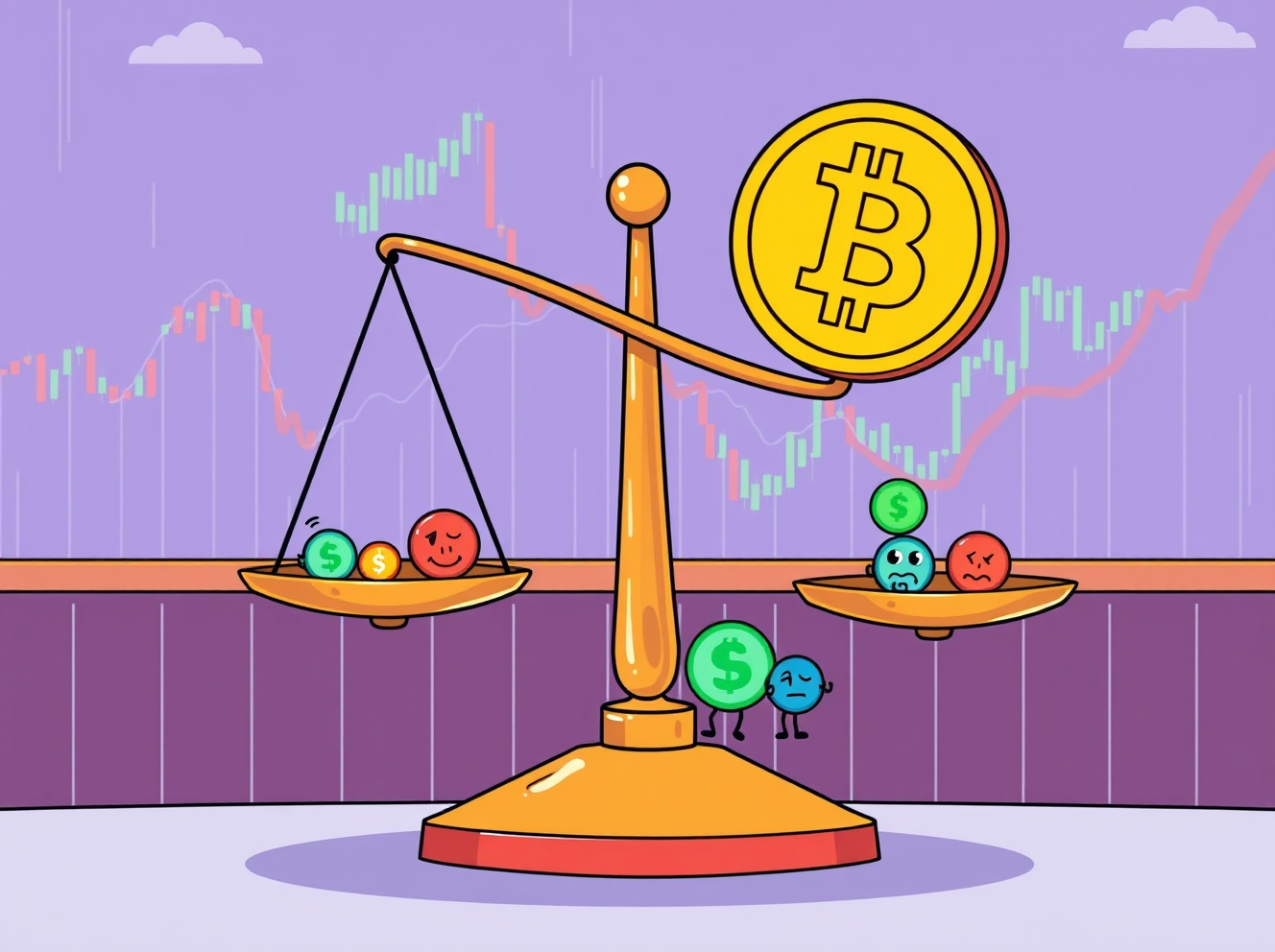Altcoin Season Index: Crucial Drop to 52 Signals Market Shift
BitcoinWorld
Altcoin Season Index: Crucial Drop to 52 Signals Market Shift
The crypto world is buzzing with recent shifts, and a key indicator, the Altcoin Season Index, has just sent a clear signal. CoinMarketCap’s widely watched index has seen a notable four-point decline, settling at 52. This movement isn’t just a number; it reflects evolving dynamics between altcoins and Bitcoin, prompting many investors to re-evaluate their strategies and market outlook.
What Exactly is the Altcoin Season Index?
Understanding this index is crucial for navigating the volatile cryptocurrency market. But what does it actually measure, and why is it so important for your investment decisions? The Altcoin Season Index serves as a barometer for the broader altcoin market’s health relative to Bitcoin. It’s not just a simple average; rather, it uses a specific methodology to gauge performance.
Here’s how it works:
- It tracks the price performance of the top 100 cryptocurrencies by market capitalization.
- Crucially, it excludes stablecoins and wrapped tokens to focus purely on speculative assets.
- The performance of these altcoins is then directly compared against Bitcoin’s performance over the preceding 90 days.
A reading closer to 100 suggests that market conditions strongly favor altcoins, indicating a potential ‘altcoin season’. This index offers a snapshot of where the market’s momentum truly lies.
Decoding the Dip: What Does an Altcoin Season Index of 52 Mean?
The recent four-point drop, bringing the Altcoin Season Index to 52, signals a significant shift. For context, an altcoin season is officially declared when a substantial 75% of the top 100 altcoins have outperformed Bitcoin over the last 90 days. Conversely, if Bitcoin leads the pack, we enter a ‘Bitcoin season’.
A reading of 52 places the market squarely in a neutral zone, perhaps leaning slightly towards Bitcoin’s favor, but certainly not a definitive altcoin dominance. This current standing suggests a period of re-evaluation for many investors. It means that while some altcoins may still be thriving, the broader market isn’t experiencing the widespread, explosive gains typically seen during a full-blown altcoin season.
Challenges and Opportunities During This Period:
- Challenges: Investors might find it harder to achieve broad, market-wide gains from altcoins. The focus shifts from ‘buy everything’ to highly selective investing. Increased correlation with Bitcoin’s price movements can also mean altcoins might suffer more during Bitcoin dips.
- Opportunities: This neutral phase can be ideal for identifying undervalued altcoins with strong fundamentals that have been overlooked. It’s a chance to build positions in promising projects before the next market upswing. Furthermore, it encourages a more disciplined, research-driven approach to investing, moving away from speculative ‘pump and dump’ cycles.
Navigating the Market: Strategies During a Neutral Altcoin Season Index
With the Altcoin Season Index hovering at 52, how should investors approach the market? This isn’t a time for panic, but rather for thoughtful consideration and strategic planning. Prudent decision-making can help you capitalize on the market’s evolving landscape.
Consider these actionable insights:
- Research is Paramount: Focus on projects with strong fundamentals, clear utility, and active development, regardless of broader market sentiment. Don’t just follow the hype.
- Dollar-Cost Averaging (DCA): Continue to invest a fixed amount regularly to mitigate the impact of market volatility. This strategy averages out your purchase price over time.
- Monitor Bitcoin Dominance: Keep a close eye on Bitcoin’s market capitalization dominance. A rising dominance often correlates with a lower Altcoin Season Index, indicating Bitcoin is drawing more capital.
- Diversify Wisely: While altcoins offer high reward potential, ensure your portfolio is balanced and not overly exposed to a single asset class. Spread your risk across different sectors.
- Stay Informed: Market conditions can change rapidly. Follow reliable crypto news sources and expert analysis to adapt your strategy quickly.
This period could be an excellent opportunity to accumulate promising altcoins at potentially lower prices before the next major market cycle. Patience and strategic accumulation are often rewarded in such phases.
The recent drop in the Altcoin Season Index to 52 is a crucial development for anyone involved in the crypto space. It signals a move away from broad altcoin outperformance and into a more balanced or Bitcoin-favored environment. While it might temper expectations for immediate, widespread altcoin rallies, it also highlights the dynamic nature of the crypto market. By staying informed, practicing diligent research, and adopting a strategic approach, investors can navigate these shifts effectively and position themselves for future growth. The index serves as a powerful reminder that vigilance and adaptability are key to success in this exciting, ever-evolving landscape.
Frequently Asked Questions (FAQs)
1. What is the Altcoin Season Index?
The Altcoin Season Index is a metric from CoinMarketCap that measures the performance of the top 100 altcoins (excluding stablecoins and wrapped tokens) against Bitcoin over the preceding 90 days.
2. How is the Altcoin Season Index calculated?
It’s calculated by comparing the price performance of the top 100 cryptocurrencies by market capitalization (excluding stablecoins and wrapped tokens) against Bitcoin’s performance over the past 90 days.
3. What does an Altcoin Season Index of 52 indicate?
An index of 52 indicates a neutral market condition. It suggests that neither altcoins nor Bitcoin are overwhelmingly outperforming the other across the board, though it might lean slightly towards Bitcoin’s favor.
4. What should investors do when the Altcoin Season Index is neutral?
During a neutral Altcoin Season Index, investors are advised to focus on thorough research, consider dollar-cost averaging, monitor Bitcoin dominance, and diversify their portfolios. It’s a time for selective investment rather than broad market exposure.
5. What’s the difference between an Altcoin Season and a Bitcoin Season?
An Altcoin Season occurs when 75% of the top 100 altcoins outperform Bitcoin over 90 days. Conversely, a Bitcoin Season is when Bitcoin largely outperforms the majority of altcoins during the same period.
If you found this article insightful, consider sharing it with your network! Your support helps us continue to provide valuable crypto market analysis and insights.
To learn more about the latest crypto market trends, explore our article on key developments shaping Bitcoin price action.
This post Altcoin Season Index: Crucial Drop to 52 Signals Market Shift first appeared on BitcoinWorld and is written by Editorial Team
También te puede interesar

Trading time: Tonight, the US GDP and the upcoming non-farm data will become the market focus. Institutions are bullish on BTC to $120,000 in the second quarter.

South Korea Virtual Asset: Pivotal Task Force Unveils Future Crypto Regulation
